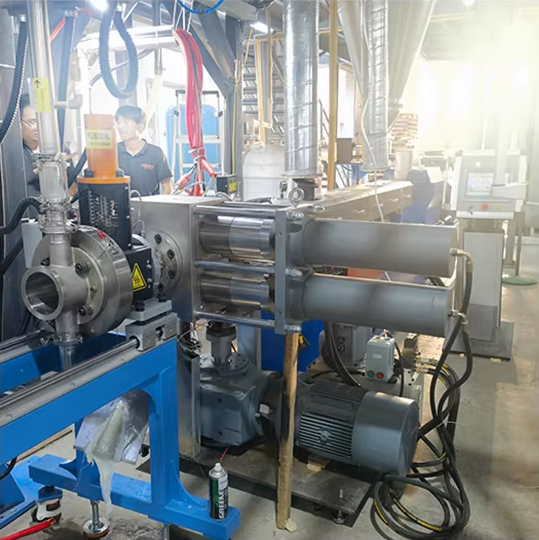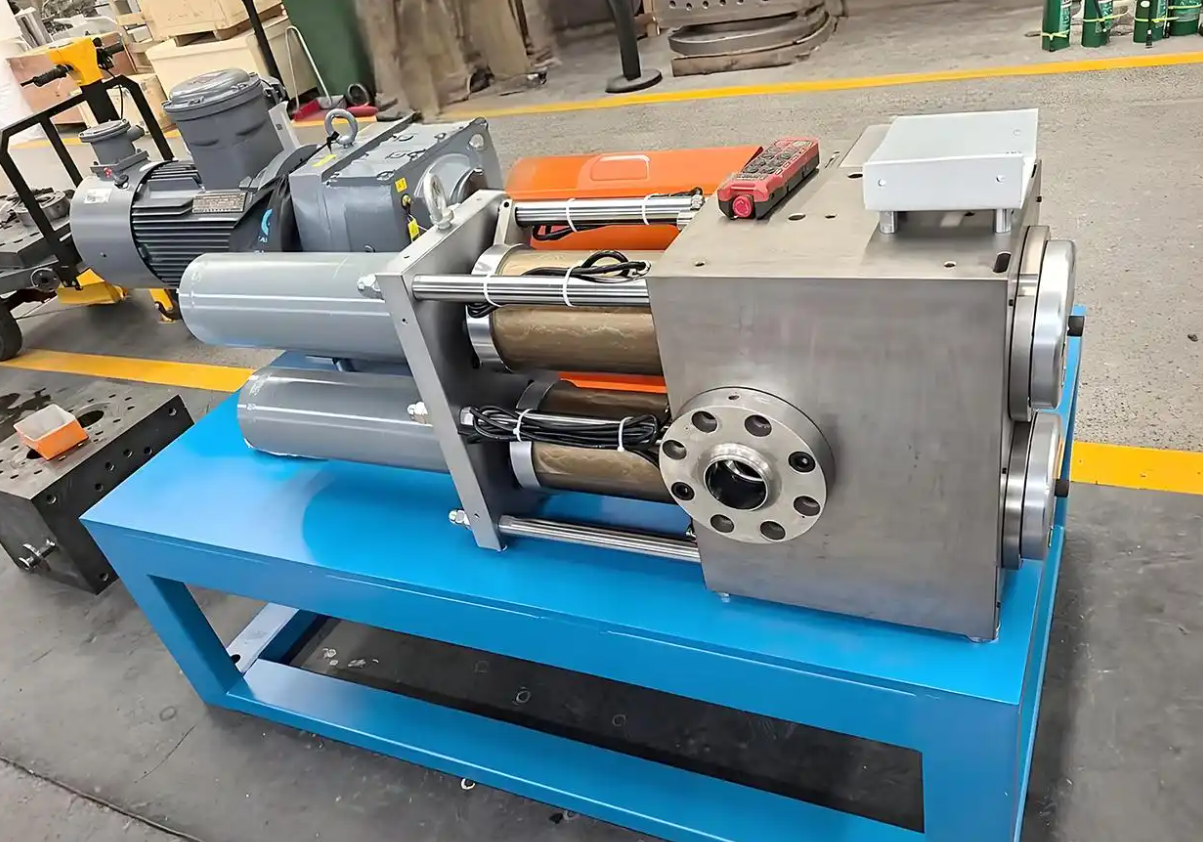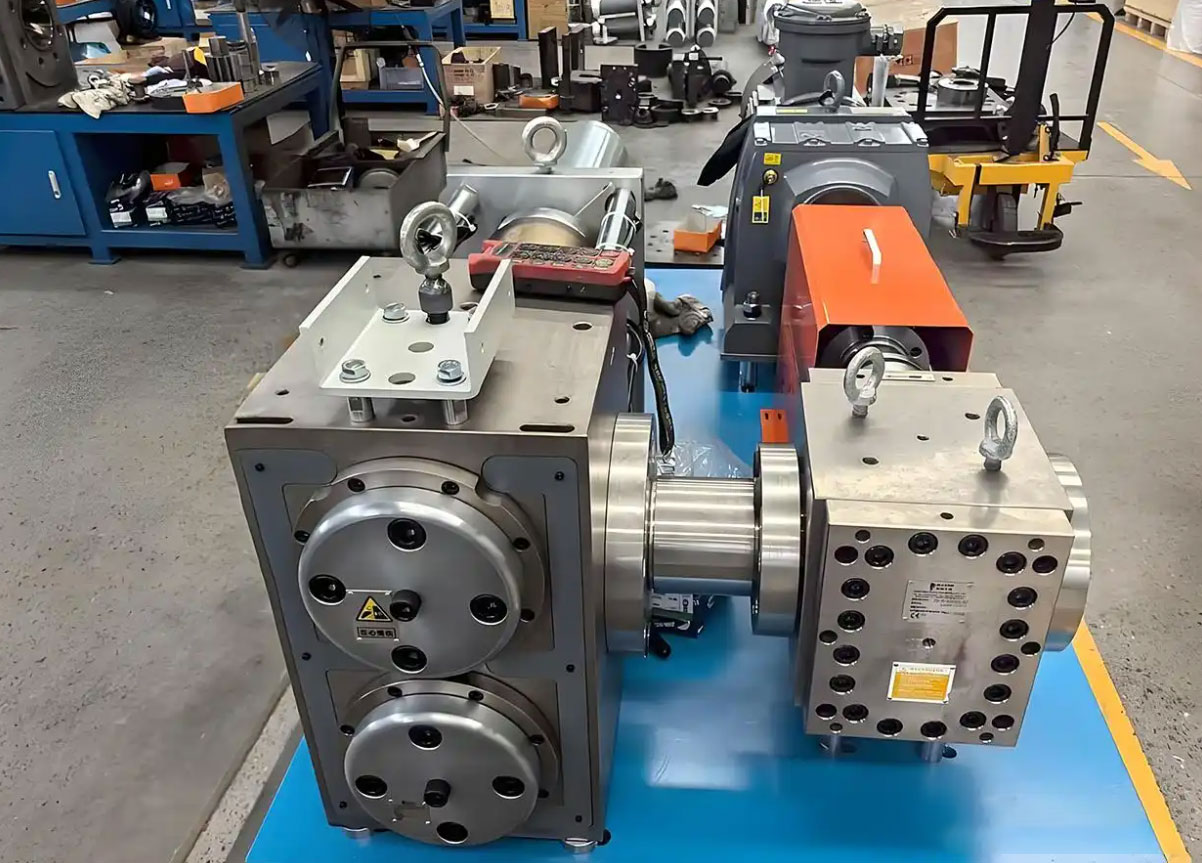Hot Melt Adhesive Dual-Column Screen Changer
The performance of the hot melt adhesive dual-column screen changer directly determines the purity and production efficiency of downstream products (such as hot melt adhesive films, tapes, and composite panels). Its key performance indicators are as follows:
Controllable filtration precision to accommodate diverse process requirements. The core filtration assembly combines “screen mesh + filter plate,” enabling selection of mesh sizes (typically 20-200 mesh) based on hot melt adhesive viscosity (usually 1000-100000 cP), impurity content (e.g., carbonized particles, unmelted granules). This achieves comprehensive coverage from “coarse filtration of large particles” to “fine filtration of micro-impurities.” For example:
Hot melt coating processes (e.g., label adhesives) require 50-100 mesh screens to prevent pinholes in the coating.

High-transparency hot melt adhesives (e.g., medical adhesives) require 150-200 mesh screens to ensure product light transmission.
Rapid screen changes enable “non-stop operation” through a “dual-column alternating operation” design (two independent filter columns A and B). When column A's screen clogs and differential pressure reaches the set value (typically 0.5-2MPa), the pneumatic/hydraulic drive mechanism swiftly switches to column B (switching time ≤3 seconds). Column A can then undergo offline screen replacement while column B operates, maintaining uninterrupted hot melt adhesive flow. This eliminates the traditional “single-column operation” limitation. pneumatic drive mechanism to switch to column B (switching time ≤3 seconds). Column A can then be taken offline for filter replacement while column B operates, maintaining uninterrupted hot melt adhesive flow. This eliminates production losses caused by downtime during traditional “single-column filter changers” (each shutdown typically results in 0.5-2 hours of lost production).

Minimal melt pressure loss ensures stable flow. The flow channel design employs a “low-resistance curved structure” to prevent melt stagnation or dead zones within the changer (melt stagnation can cause carbonization, affecting product quality). Simultaneously, pressure fluctuations during dual-column switching remain ≤0.2MPa, precisely matching the stable output of extruders/coaters to avoid issues like uneven coating thickness or adhesive breakage caused by sudden pressure changes.
High Temperature Control Precision for Hot Melt Sensitivity Hot melt adhesives are temperature-sensitive (typical processing range: 120-220°C; overheating causes aging and discoloration). This dual-column hot melt filter press achieves ±1°C temperature control accuracy. Its channel inner walls feature a polished finish (roughness Ra ≤ 0.8μm), minimizing friction-induced heat generation between melt and walls to prevent localized overheating.

Applications for Hot-Melt Adhesive Twin-Column Screen Changers
Hot-melt extrusion molding (e.g., hot-melt sticks, pellets);
Hot-melt coating (e.g., pressure-sensitive labels, hygiene product flow control layer coating);
Hot-melt lamination (e.g., film-fabric composites, paper-plastic composites);
High-purity hot-melt production (e.g., medical-grade, electronic-grade adhesives).
Email: sale@meltpump.com
WhatsApp: +86 158 3833 1071